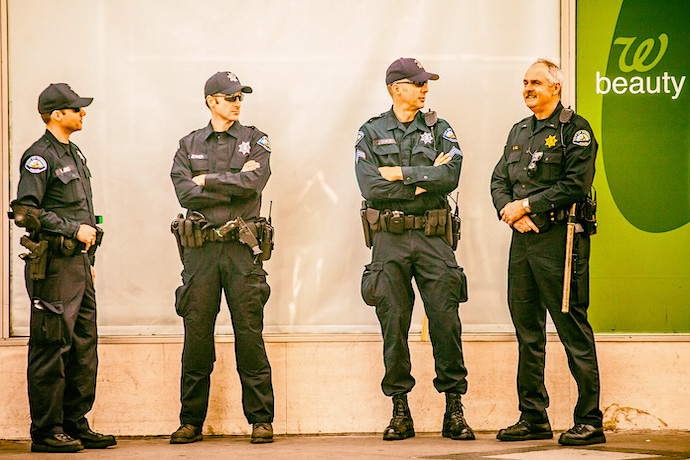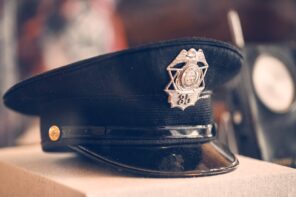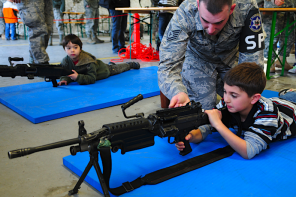Sometimes it’s little details that evoke the biggest feels. I’ve been writing about the Uvalde massacre most of the past week. I’ve been so focused on facts and arguments, I haven’t sobbed. But the tears came after reading a report by KENS 5, a TV news station local to that Texas community, where 19 fourth-graders were shot to pieces.
The report was an eyewitness account by a survivor of the shooting. The boy, whom the reporter did not identify, said he and a friend “heard the shooting through the door.” He added that, “I told my friend to hide under something so he won’t find us. I was hiding hard. And I was telling my friend to not talk because he is going to hear us.”
He recalled what happened after police came through the classroom door that [the shooter] had locked behind him. “When the cops came, the cop said: ‘Yell if you need help!’ And one of the people in my class said ‘help.’ The guy overheard and he came in and shot her.”
That’s it. That’s the detail that got me. A child desperately needing to trust a caring adult. A child shot to pieces for needing and trusting.
Because of a cop’s incompetence.
The teachers were the heroes
The boy’s eyewitness account is more damning in context.
The Washington Post reported Thursday that, with his rifle, the shooter strolled into the school “unobstructed.” Officials had said he encountered three cops. First, an in-school cop. Then, two others arrived on the scene. Officials had said the latter two officers sustained injuries.
Turns out all that was a lie.
Police arrived “four minutes” after the shooter entered the building, officials conceded. Meanwhile, as S.R. was shooting 19 fourth-graders to pieces, they dithered outside for an hour.
A video shows some carrying semiautomatic rifles. It shows one cop with his taser drawn, at the ready while another restrains what appears to be a parent in order to prevent them from entering the building.
This is the context in which the boy’s testimony is even more damning than the incompetent cop who got a girl killed for needing to trust.
Irma Garcia and Eva Mireles were the boy’s teachers, the KENS reporter said. They were shot to pieces. They saved his life, he said.
“They were nice teachers,” he said.
“They went in front of my classmates to help.”
“To save them.”
The living get to write history
We’ve entered a familiar period after shooting massacres during which officials justify what police did and why. We’re hearing Thin Blue Line advocates saying it was reasonable to hang back. After all, the scene was dangerous. The suspect had a semiautomatic rifle.
This familiar pattern, by which police authorities presume the public is on their side, and won’t question them too much, is fraying as more details emerge as to what the police didn’t do and why they didn’t do it.
On the video, you can hear rapid-fire gunshots followed by mothers wailing in despair, pleading with armed police to save their kids.
The good guys with the guns were not that good. Indeed, they were deadly. It was the teachers, who were not armed, who did the most to save their students. The real heroes are dead. The cowards are alive.
But the living get to write history.
White power incarnate
As a matter of fact, police departments across the country do as much to influence public opinion as they do “crime fighting.” Their influence is so great the public finds it completely understandable when cops refuse doing their jobs in the face of mere scrutiny. It’s so great, that cops can get away with murder on account of murder being seen as a tragic but sometimes necessary response to the dangers of facing “an infestation” of criminals and crime. It’s so great that few complain about Uvalde’s cop shop sucking up 40 percent of the town’s yearly budget.
The influence of American police departments on public opinion is deeply rooted in the reason cop shops exist—yes, to “protect and serve,” sometimes, but more often to serve as the last line of defense against democratic forces threatening to flatten the old orders of social and political power. Cops are white power incarnate.
So expect to hear familiar rhetoric about “brave men and women in uniform who put their lives on the line to protect communities.”
But don’t believe it.
Turn that story around.
What are cops for?
First, they don’t stop crime.
“If larger police forces make us safe, then by that logic, the U.S. would already be the safest society in the world as over $115 billion is spent on policing a year, a budget larger than any other country’s military budget except for China,” writes Kinjo Kiema. “Over 50 years of crime data shows only 2 percent of crimes end in conviction. Police don’t stop crime that has occurred, nor do they prevent it from happening.”
Second, police don’t stop violence.
“When researchers account for the impacts of socio-economic and other factors, the reality that police don’t protect us from violence—because their purpose is to use violence to maintain ‘order’ premised on existing relations of power—becomes more clear,” according to research by activists Mariame Kaba and Andrea J. Ritchie.
Third, police manufacture violence.
“Police are violence workers,” Kaba and Ritchie write. “Their response to violence is more violence or the threat of violence. This means more police, police contact and police resources automatically means more violence because cops add their own violence to what’s already [there].”
“They are the sources of violence,” they conclude.
Another detail that gets me
So what are police for?
As I’m writing this, the Times reports that Border Patrol agents arrived earlier than previously known. But when they got there, the local Uvalde cops “would not allow them to go after the gunman who had opened fire on students inside the school, according to two officials.”
They “had driven up from the Mexican border, one official said. The official said it was not clear to the federal agents why their team was needed, and why the local SWAT team did not respond.”
As I write, the LA Times reports that the kids “begged for police to enter their classroom and save them, repeatedly calling 911, as a team of 19 police officers waited in the corridor for an hour because a commander believed the situation had shifted from active shooter to a barricaded subject, a Texas law enforcement officer said today.”
They don’t stop crime.
They don’t stop violence.
They manufacture violence.
That’s another detail that gets me. We need to trust law enforcement.
Yet law enforcement so often has us wondering why we should.





